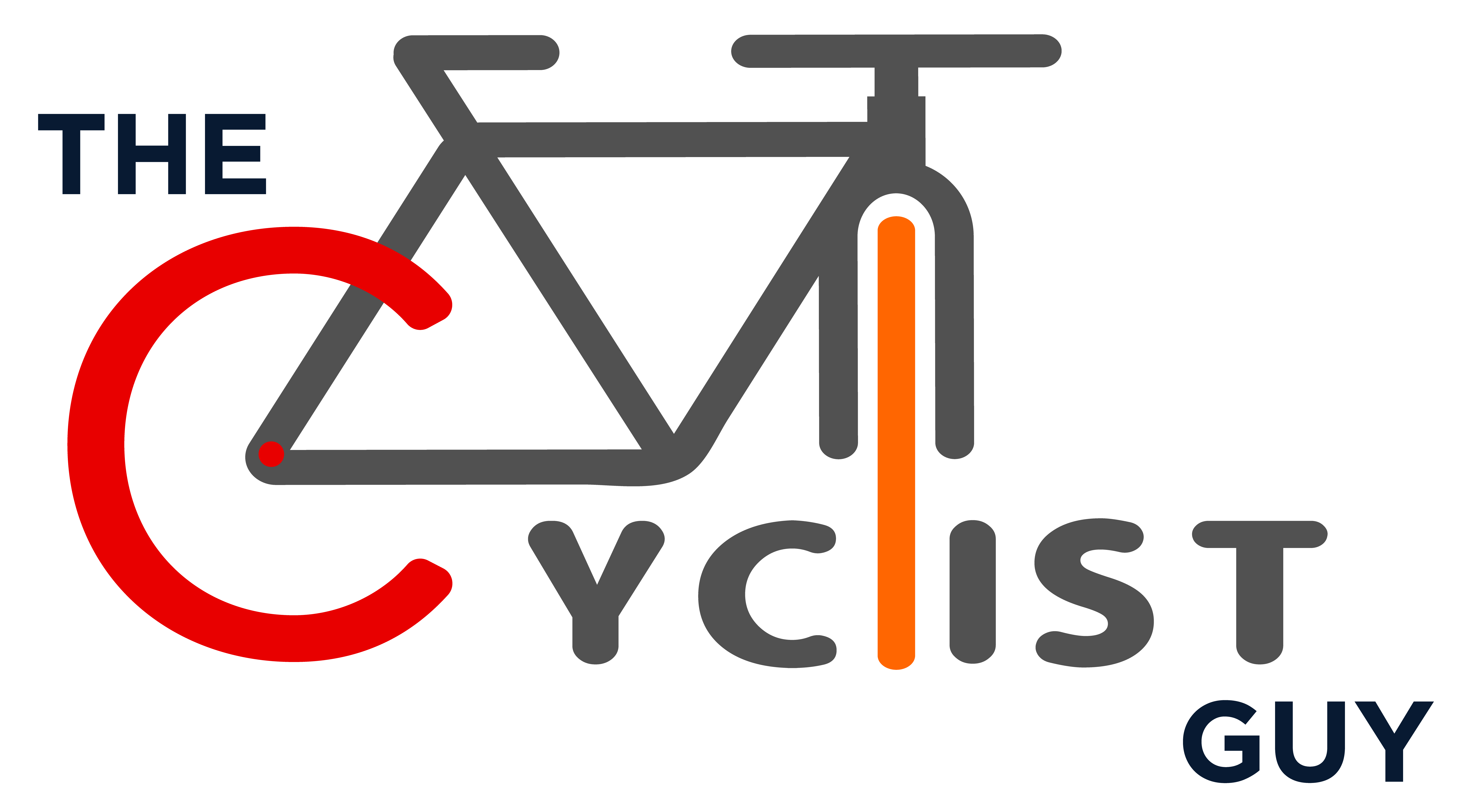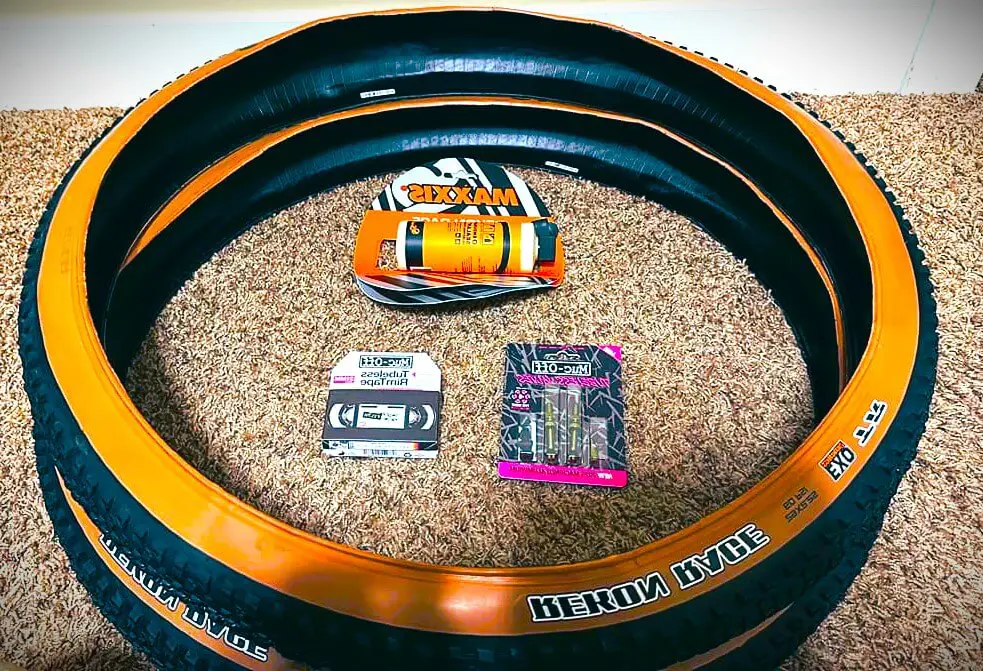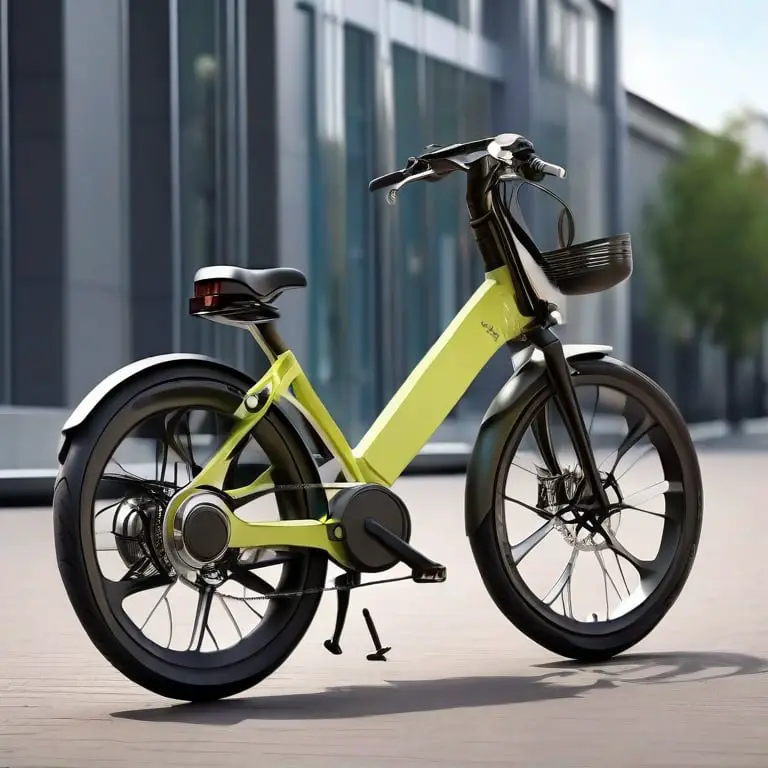Helmet Expiration Date: Stay Safe & Updated!
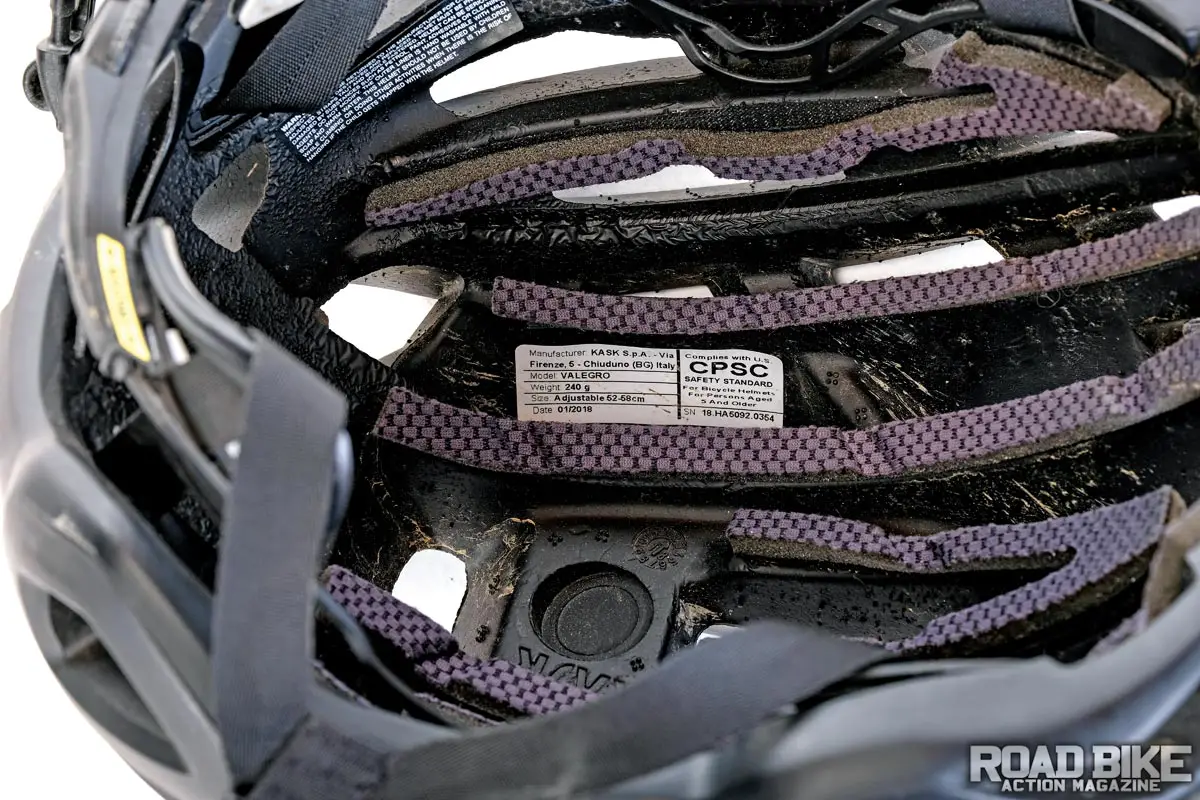
As an affiliate, we may earn from qualifying purchases. We get commissions for purchases made through links on this website. You can read more on our Affiliate Disclaimer here.
Helmet expiration dates typically occur about 3 to 5 years after production. This timeline can vary based on brand and helmet usage.
Wearing a helmet is essential for protecting your head during activities like biking, motorcycling, or playing contact sports. Over time, the protective materials in helmets degrade, reducing their effectiveness in the event of an impact. The expiration date serves as a guideline to ensure safety is not compromised.
Factors such as exposure to sunlight, chemicals, and wear and tear can accelerate a helmet’s aging process. Recognizing the expiration date also means acknowledging that technological advancements might have improved safety standards, potentially making newer helmets a smarter choice for protection. It is crucial to check your helmet regularly and replace it when it reaches its expiration date or shows signs of significant wear.
Importance Of Helmet Expiration Dates
Many riders might not be aware that their trusty helmets have an expiration date. While it may seem like a durable piece of equipment, a helmet’s protective capacity diminishes over time. Understanding the importance of helmet expiration dates is crucial for anyone who seeks to maintain optimal protection when engaging in activities that require headgear. Adhering to these dates ensures that the helmet will offer the level of safety it was designed to provide.
Safety Regulations And Standards
The manufacturing and design of protective helmets are governed by stringent safety regulations and standards. These standards are constantly updated to reflect technological advancements and improved safety research. Helmets that meet these standards come with a certification that indicates they are capable of providing appropriate protection. However, these certifications are based on the assumption that the helmet is still structurally sound, which could be compromised as the helmet ages. Recognizing the expiration date allows users to replace their helmet before its safety certification may be rendered null due to material degradation or outdated technology.
Material Degradation Over Time
Helmets, much like any protective gear, are prone to material degradation over time. Factors like exposure to UV light, chemicals, and the stresses of use can affect the performance of the materials that comprise a helmet. For instance:
- Polycarbonate shells can become brittle.
- EPS foam may compress or deteriorate.
- Interior padding can lose its form and ability to cushion.
This degradation can significantly diminish a helmet’s ability to absorb and distribute the energy from an impact effectively. It’s essential to ensure your helmet material is in prime condition to guarantee the highest level of protection. Helmet expiration dates encourage replacement before the integrity of the material is compromised, maintaining the essential safety features for as long as the helmet is used.
Inspecting Helmet Expiration Dates
Understanding the importance of a helmet’s integrity, it’s critical to ensure that the safety gear you trust with your wellbeing is within its service lifespan. Helmet expiration dates play a pivotal role in maintaining safety standards. Over time, the materials can degrade, reducing the helmet’s effectiveness in protecting against impacts. Below, a guide will navigate through the essential steps for inspecting helmet expiration dates, ensuring your protection is not compromised.
Location Of Expiration Date Label
Identifying where the expiration date label is situated on your helmet is the first step towards safety. Most manufacturers place the label inside the helmet, either on the EPS liner, under the comfort padding, or at the back near the sizing information. However, the location might vary from brand to brand. Keep an eye out for stickers or embossed marks that provide the essential date information.
Types Of Expiration Date Format
Helmet expiration date labels can come in various formats. You are likely to encounter either a manufacture date or an explicit expiration date. Being aware of the different formats will help you calculate the usability period of your helmet:
- Manufacture Date: This informs you of the production date. The industry standard suggests that helmets should be replaced every 3 to 5 years from the manufacture date, depending on the manufacturer’s recommendations and usage conditions.
- Expiration Date: Some labels directly state the expiration date, which is the date beyond which the manufacturer no longer guarantees the effectiveness of the helmet.
To determine the relevant date, you might find the following formats:
| Format Type | Description | Action Required |
|---|---|---|
| MM/YYYY | Displays the month and year of manufacture. | Calculate 3-5 years from this date based on usage and recommendations. |
| Quarter/Year | Indicates the quarter of the year and year (e.g., Q1 2020). | Assess the middle of that quarter and add the recommended usage period. |
| Explicit Date | Shows a clear expiration date for helmet usability. | Replace the helmet before or by this date. |
Keeping track of these details is not just good practice; it’s a commitment to your personal safety. Treat the helmet expiration date as a non-negotiable checkpoint in your protective gear maintenance regimen.
Degradation Of Materials
Understanding the lifespan of a helmet is crucial for ensuring ongoing head protection. Over time, the materials used in helmets degrade, which can significantly reduce their effectiveness in the event of an impact. The degradation process is influenced by a variety of factors ranging from UV exposure to the aging of protective foams. This section explores the impact of these elements on helmet safety and longevity.
Effects Of Uv Exposure
The exposure to ultraviolet (UV) rays can be particularly detrimental to the materials in helmets. Just as the sun’s rays can damage skin cells, they can also affect the structural integrity of the helmet. Materials such as the outer shell and the helmet’s visor can become brittle and prone to cracking due to UV exposure. This wear can go unnoticed until a fall or collision reveals the material’s weakened state.
- Reduced elasticity of the helmet’s surface
- Discoloration, indicating material breakdown
- Development of micro-cracks that compromise safety
Aging Of Protective Foam
The internal protective foam, often made of expanded polystyrene (EPS), is essential for absorbing impacts. Unfortunately, over time this material loses its shock-absorption capability. The foam can harden or become compacted, leading to a reduced ability to cushion the head during an impact. Factors that contribute to the aging of helmet foam include:
- Frequency of helmet use
- Conditions of storage, such as extreme temperatures or humidity
- Physical impacts or compression from improper handling
It’s important to check the state of the protective foam regularly, especially if the helmet is frequently used, as compromised foam can mean compromised safety.
Legal Implications
Legal Implications of helmet expiration is a crucial aspect that both individual riders and organizations must consider. In the realm of motorcycle riding, construction work, or any activity requiring head protection, adhering to helmet expiration dates is not just a matter of personal safety, but also of legal accountability. Let’s delve into the specific legalities that come into play with expired helmets, underlining the importance of being informed and responsible.
Compliance With Safety Regulations
For helmet users, compliance with safety standards is paramount. These regulations are put in place to ensure that all helmets sold and in use meet minimum safety criteria. Regulatory bodies such as the Occupational Safety and Health Administration (OSHA) in the United States and similar organizations around the world mandate employing safety gear that adheres to established industry standards.
Failure to comply can lead to various consequences, including fines and citations. Plus, organizations risk losing safety certifications that can significantly undermine credibility. Let’s examine the essential regulations that impact your helmet’s validity:
- DOT – Department of Transportation (U.S.)
- Snell – The Snell Memorial Foundation
- ECE – Economic Commission for Europe
- OSHA – Occupational Safety and Health Administration
These bodies have stringent rules regarding helmet expiration and staying within these guidelines is not just recommended, it’s legally enforced.
Liability In Case Of Accidents
Liability issues arise when accidents occur. If an expired helmet is involved, questions about its performance in protecting the user become a focal point of investigation. Should an accident lead to legal action, the use of an expired helmet can heavily sway the direction of the case.
Personal liability for individuals and corporate liability for employers can surge exponentially when expired helmets contribute to injury. Here’s what’s at stake:
- Determination of negligence due to non-compliance with safety standards.
- Nullification of potential insurance claims, which often stipulate the use of proper safety gear.
- Possible legal repercussions including fines, or worse, criminal charges in cases of gross negligence.
Understanding this, choosing to wear a helmet within its designated lifespan is an individual’s responsibility with significant legal ramifications.
Timeline For Replacement
Understanding the Timeline for Replacement of a helmet is essential not just for ensuring ongoing protection but also for maintaining compliance with safety standards. Just like perishable goods, helmets have a finite lifespan and should be replaced periodically to ensure that they provide optimal protection. Many riders might overlook this detail, unknowingly compromising their safety.
Recommendations From Safety Organizations
Various safety organizations weigh in on the lifespan of a helmet, offering guidelines for when to consider a replacement.
- Snell Memorial Foundation recommends replacing your helmet every five years from the date of manufacture.
- The Consumer Product Safety Commission (CPSC) doesn’t provide a specific timeline but urges users to follow manufacturer guidelines.
- Motorcycle Safety Foundation (MSF) suggests a timeframe of three to five years, depending on usage and manufacturer instructions.
These pressing recommendations arise from extensive research and testing under various conditions to ensure helmets maintain their protective integrity over time.
Factors Influencing The Expiration Timeline
Factors that may influence a helmet’s expiration timeline include:
| Factor | Effect on Expiration |
|---|---|
| Material Degradation | Helmet materials can degrade over time, even without direct impact. |
| Wear and Tear | Regular use can cause microfractures and weaken the helmet’s structure. |
| Impact | A major impact can compromise the helmet, requiring immediate replacement. |
| Advancements in Technology | New safety features and materials may render older designs obsolete. |
| Exposure to Chemicals | Exposure to harsh chemicals can degrade helmet materials quicker. |
| Storage Conditions | Excessive heat or cold can alter the helmet’s effectiveness. |
Considering these factors, individuals should perform regular inspections of their helmets for signs of wear or damage and replace them within the recommended timeline or sooner if any critical factors suggest immediate replacement.
Cost-benefit Analysis
Introduction to Cost-Benefit Analysis
Understanding the lifespan of a helmet is crucial for both your safety and your wallet. It’s a common misconception that helmets last forever. However, the materials they are made out of can degrade over time, diminishing their protective capabilities. Consequently, a cost-benefit analysis is essential to determine when to invest in a new helmet without compromising your budget or safety. Delve into the intricacies of balancing the cost of helmet replacement against the critical need for protection.
H3 Heading: Balancing safety with cost
Balancing Safety With Cost
Motorcyclists and athletes often face the dilemma of balancing safety with the cost of gear. Safety helmets are not excluded from the routine wear and tear, especially those designed for dynamic and potentially high-impact activities. Manufacturers typically recommend replacing helmets every three to five years. However, this timeline may shorten with frequent use or after a significant impact.
The main factors that affect helmet integrity include material degradation due to UV exposure, sweat, and chemicals, as well as physical damage from impacts. Therefore, conducting a regular assessment of your helmet’s condition can help you discern when the cost of a new helmet is justified for ensuring continued safety.
H3 Heading: Options for Affordable Replacements
Options For Affordable Replacements
If the time has come to replace your helmet, cost-effective options are available. Safety must always remain the top priority, so consider the following strategies to find affordable replacements that do not compromise on quality and protection:
- Discounts and Sales: Keep an eye out for seasonal sales, clearance events, or special promotions offered by reputable brands and retailers.
- Previous Model Purchases: Often, when a new model releases, older versions become available at reduced prices.
- Online Marketplaces: Certified refurbished or lightly used helmets can be found on trusted online platforms, ensuring affordability without sacrificing safety standards.
- Bulk Purchases: Group purchases with friends or club members may lead to discounts.
When exploring these options, always ensure that the helmet meets safety certifications and has no history of significant impacts. Buying a helmet is an investment in your wellbeing; therefore, choosing a certified and safe product should be paramount, even when searching for cost-effective solutions.
Awareness Campaigns
Knowing when a helmet has expired is crucial for maintaining safety standards in various activities, from cycling to construction work. Through strategic awareness campaigns, organizations can significantly increase awareness about helmet expiration dates and their importance. These campaigns play a critical role in educating the public about the risks of using outdated safety gear and the benefits of timely helmet replacement.
Collaborations With Safety Organizations
Joining forces with established safety organizations leads to a more impactful awareness campaign. Partnerships with groups like the National Highway Traffic Safety Administration (NHTSA) or the Consumer Product Safety Commission (CPSC) can lend credibility and reach a wider audience.
- Educational materials created in collaboration that highlight the signs of helmet wear and tear.
- Joint workshops and seminars that offer engaging demonstrations on helmet safety.
- Safety checks at community events to encourage hands-on learning and direct interaction with safety experts.
Utilizing Social Media And Educational Events
With the ubiquity of social media, it serves as a powerful platform to raise awareness about helmet expiration dates. Posts, stories, and videos can quickly spread the word, making it an essential tool for any campaign. Additionally, organizing educational events serves as an opportunity to connect with the community on a personal level.
| Social Media Efforts | Educational Events |
|---|---|
| Hashtag campaigns like #HelmetSafety Infographics illustrating helmet life cycles User-generated content competitions | Interactive safety demos Q&A sessions with experts Helmet exchange programs |
Incentivizing Compliance
When it comes to road safety, wearing a helmet can make the difference between a minor incident and a life-changing injury. However, what many riders might not realize is that helmets have an expiration date. Material degradation and technological advancements render old helmets less protective over time. Encouraging riders to replace expired helmets is critical, but ensuring compliance can be a challenge. Therefore, incentivizing helmet replacement becomes a valuable strategy in boosting safety standards within the riding community. Let’s explore how incentives can play a pivotal role in this endeavor.
Discounts For Replacing Expired Helmets
Rewarding motorcyclists for their commitment to safety not only promotes a positive message but also encourages proactive behavior. Implementing discount programs for those who trade in their outdated helmets can motivate riders to take action. These discounts could be offered by:
- Retailers: Partnering with helmet manufacturers to provide a percentage off on the latest models.
- Insurance companies: Offering a rebate on premiums for riders who purchase new helmets.
- Riding clubs: Negotiating group discounts for members to upgrade their protective gear.
Such initiatives not only make new helmets more affordable but also keep the safety conversation active within the riding community.
Promoting Safety Through Public Service Announcements
Another powerful tool to encourage compliance with helmet expiration is the use of public service announcements (PSAs). These messages, broadcasted through various media channels, can raise awareness about the risks associated with using an expired helmet. For maximum impact, PSAs can include:
- Real-life stories of how a new helmet prevented serious injury in an accident.
- Informative breakdown of a helmet’s lifecycle and the importance of its constituents such as the impact-absorbing liner and the hard outer shell.
- Endorsements from respected figures in the riding and medical communities emphasizing the critical nature of proper headgear.
Visibility of these campaigns, especially during peak riding seasons, can significantly influence rider behavior, leading to increased safety on the roads.
Credit: www.reddit.com
Frequently Asked Questions Of Helmet Expiration Date
Do Helmets Have An Expiration Date?
Yes, helmets have an expiration date. Typically, they should be replaced every 3 to 5 years, depending on the manufacturer’s recommendations. Factors like usage and exposure to elements can also affect lifespan.
How Can You Tell If A Helmet Is Expired?
Check for a production date stamp inside the helmet to determine age. Look for signs of wear and tear such as cracks, loose padding, or fading. Replace the helmet if it’s past the recommended lifespan or damaged.
What Impacts Helmet Lifespan?
Helmet lifespan is influenced by usage, care, and storage conditions. Frequent use, exposure to harsh weather, and improper storage can degrade materials faster, shortening the helmet’s safe and effective service life.
Why Replace Helmets After An Impact?
A helmet must be replaced after a significant impact because its protective materials may be compromised. Even if no damage is visible, the impact can reduce the helmet’s ability to absorb future shocks, risking safety.
Conclusion
Understanding when to replace your helmet is crucial for your safety. Don’t overlook the signs of aging or damage. Outfitting yourself with a fresh helmet can be the difference between walking away from an accident or not. Check your helmet’s condition regularly and prioritize your head protection.
Ride smart, stay safe.

Steven is a professional cyclist and his passion is cycling. He has been cycling for the last 6 years and he loves using bikes while outing as well. Based on his experiences with the different types of bikes; he is sharing his opinions about various bikes so that a beginner can start right away. Find him on Twitter @thecyclistguy Happy Biking.
